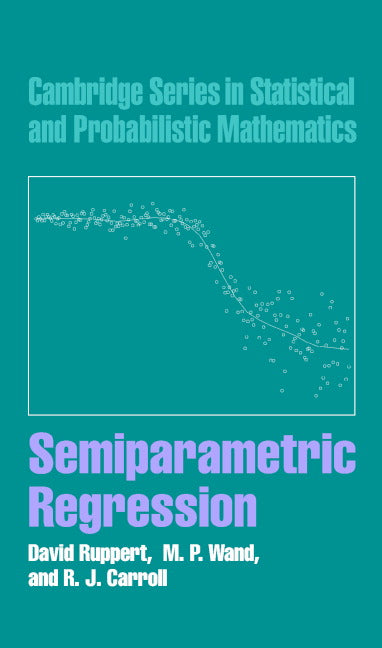Freshly Printed - allow 8 days lead
Couldn't load pickup availability
Semiparametric Regression
This user-friendly 2003 book explains the techniques and benefits of semiparametric regression in a concise and modular fashion.
David Ruppert (Author), M. P. Wand (Author), R. J. Carroll (Author)
9780521780506, Cambridge University Press
Hardback, published 14 July 2003
404 pages, 82 b/w illus.
25.4 x 17.8 x 2.4 cm, 0.92 kg
'This book is a very nice book for data analysis and indicates how to flexibly develop and analyze complex models using penalized spline functions. The examples are nontrivial and very useful, but there are no attempts to develop an asymptotic theory.' Mathematical Reviews
Semiparametric regression is concerned with the flexible incorporation of non-linear functional relationships in regression analyses. Any application area that benefits from regression analysis can also benefit from semiparametric regression. Assuming only a basic familiarity with ordinary parametric regression, this user-friendly book explains the techniques and benefits of semiparametric regression in a concise and modular fashion. The authors make liberal use of graphics and examples plus case studies taken from environmental, financial, and other applications. They include practical advice on implementation and pointers to relevant software. The 2003 book is suitable as a textbook for students with little background in regression as well as a reference book for statistically oriented scientists such as biostatisticians, econometricians, quantitative social scientists, epidemiologists, with a good working knowledge of regression and the desire to begin using more flexible semiparametric models. Even experts on semiparametric regression should find something new here.
1. Introduction
2. Parametric regression
3. Scatterplot smoothing
4. Mixed models
5. Automatic scatterplot smoothing
6. Inference
7. Simple semiparametric models
8. Additive models
9. Semiparametric mixed models
10. Generalized parametric regression
11. Generalized additive models
12. Interaction models
13. Bivariate smoothing
14. Variance function estimation
15. Measurement error
16. Bayesian semiparametric regression
17. Spatially adaptive smoothing
18. Analyses
19. Epilogue
A. Technical complements
B. Computational issues.
Subject Areas: Probability & statistics [PBT], Mathematics [PB], Epidemiology & medical statistics [MBNS]


